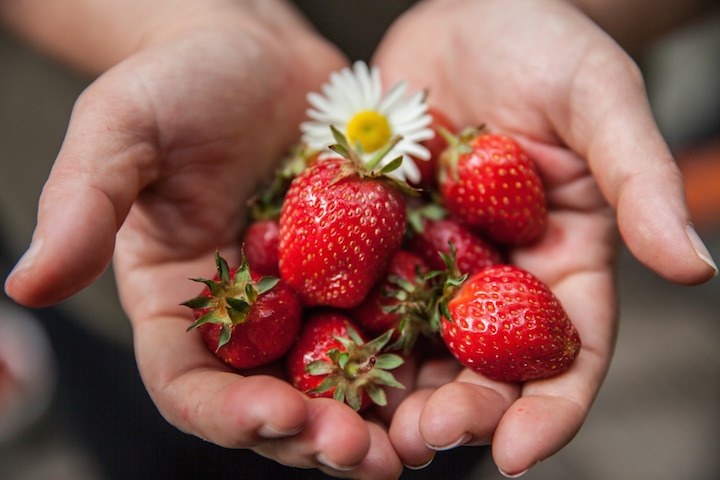
Happy National Strawberry Day!
It’s national strawberry day and to celebrate we’ve complied some information on the delicious fruit for you!
“Fresh strawberries are tasty and wholesome. They are the first berries on the market in the summer. Wild strawberries, which are much smaller but often sweeter, can be gathered most of the summer.” – Bulletin # 4268, Vegetables and Fruits for Health: Strawberries
Growing Strawberries
- Select a planting site with sandy loam soil rich in organic matter that gets full sunlight and drains well.
- Strawberries prefer a soil pH of 5.8 to 6.2; this may require applications of ground limestone to increase to increase the pH of more acid soils.
- There is a wide selection of strawberry varieties to choose from that will perform well in New England, but it is important to select types that have resistance to red stele and Verticillium root rots, produce vigorous plants, and have a consistent record of good yields and high quality fruit.
- Strawberries should be planted in the spring as soon as the soil is dry enough to be prepared.
- The best planting system for most gardens is the matted row. For this system, strawberries should be planted 18 inches apart within rows, with 48 to 52 inches between rows. The width of each row should be limited to 24 inches to maintain easy access in the planting.
- Be sure to control all weeds that emerge during the season.
- Mulch should be applied over strawberries in the late fall (mid-November) to protect the plants from extreme winter cold and from damage to the roots caused by rapid freezing and thawing of the soil. Straw is the most commonly used mulch, but any loose material which will provide cover without matting can be used, such as pine needles or wood shavings.
- Strawberry beds can usually be carried over for three to five years or more, if the plants are vigorous, the bed is kept weed free, and the planting is properly renewed or renovated every year. The bed should be renovated shortly after the harvest is complete, usually late July.
(Read Bulletin #2067 for more information on Growing Strawberries and disease and insect control. Read Bulletin # 2148 for more information on strawberry varieties for Maine. Learn about Strawberries Grades and Standards from the USDA here.)
Nutrition Information
Raw strawberries are low-calorie fruits. One cup of berries has 45 calories and provides 100 percent of the recommended vitamin C for an adult. Berries are also rich in potassium.
One serving of cooked, canned, or frozen berries is equal to about a half cup. For fresh berries, use one cup as a serving size. But there’s no need to worry about limiting your serving sizes if you eat fresh, raw berries. Only by adding sugar or high-fat products—like a pie crust or whipped topping—will you add calories and fat. Choose serving methods that will provide you with the best source of nutrients while limiting fat and sugar.
(Read Bulletin #4268 for information on selection, preparation, and storage.)
Strawberry Smoothies
 Serves 4 to 6
Serves 4 to 6
8 ounces vanilla yogurt
2 cups crushed ice
1 cup fruit juice
1/4 cup dry milk
1 banana or 1/2 cup strawberries
strawberries for garnish
Place yogurt, ice, fruit juice, and dry milk into the blender. Peel and break up banana and add to blender. Blend until smooth and then pour into cups. Top with strawberries.
